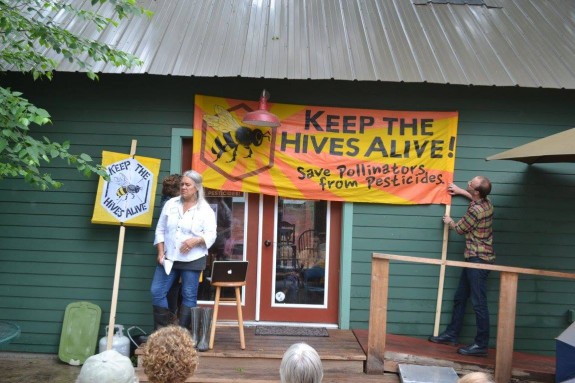
Earlier this summer CURE co-sponsored the Minnesota stop of the Keep Hives Alive Tour at Moonstone Farm in Montevideo. During the stop Minnesota beekeeper James Cook shared with us the risks posed to pollinators (both native and commercial) and food systems as a whole. The tour took 2 million dead bees to the Environmental Protection Agency in Washington D.C. to demand their action on one of the clear culprits: pesticides.

During the 2014-2015 season alone, Minnesota beekeepers lost 50% of their bees. A 2015 study found that 139 counties in Minnesota — primarily in the western part of the state — are facing a shortfall of wild bees, which means that crops like soybeans, vegetables and fruit are likely not getting the pollination they need for maximum yield. Research indicates that multiple factors are causing pollinator decline, including pesticides, habitat loss, and diseases and parasites.
CURE has had an eye on pollinators for some time now. In October of 2014 we hosted a Pollinator Public Policy Forum with Representative Rick Hansen, Rep. Andrew Falk, and Rep. Jean Wagenius
That’s why we were encouraged by Governor Dayton’s Executive Order issued on August 26, 2016 which took action to limit application of neonicotinoid pesticides.
“Bees and other pollinators play a critical role in supporting both our environment, and our economy,” said Governor Mark Dayton. “This order directs state government to take immediate action to alleviate the known risks that pollinators face. It also will create a new taskforce to study the issues impacting pollinators and recommend long-term solutions.”

Dayton’s order calls for a clear “verification of need” in order to allow the application of neonicotinoid pesticides. Meaning that no “preemptive” spraying will be allowed; a pest must actually pose a threat to the economic viability of the crop for the pesticide to be applied. Pesticide labels will be more closely monitored to assure farmers and pesticide applicators follow directions to protect pollinators. The Governor will also convene a 15 person committee to help guide implementation and future pollinator protections.